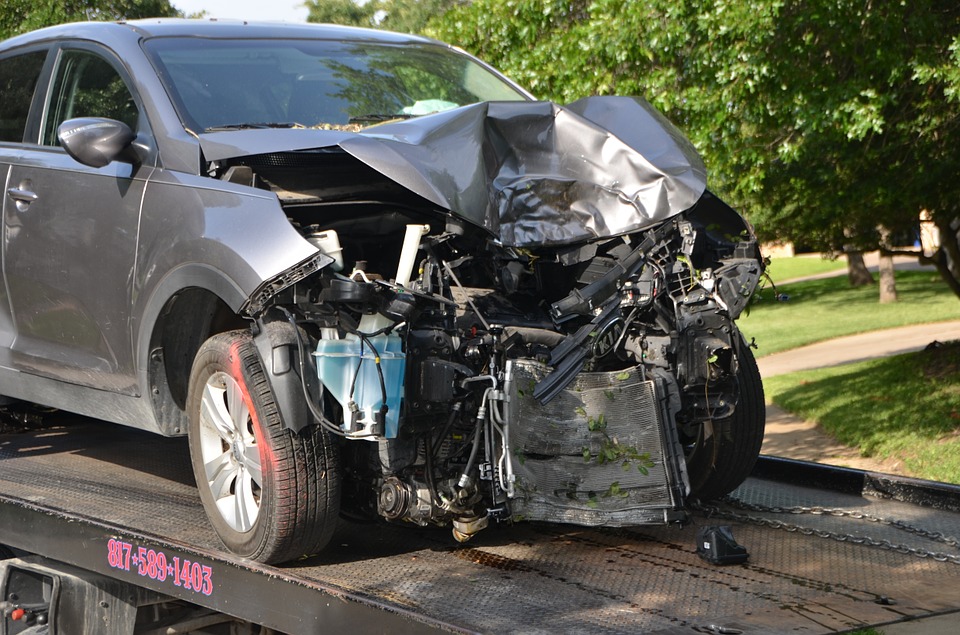An auto accident is an unforeseen incident that can create unforeseen circumstances. In other words, it can really mess up whatever plans you had before the accident took place. That is because you now have to worry about the expenses caused by the accident and what you are going to do for transportation since it is unlikely that you will be able to drive your car.
Fortunately, if you were not at fault for the accident, then many of those concerns can be taken care of if you file a personal injury case. The reason is that you can receive compensation from the insurance company of the responsible driver that will pay for your accident-related expenses. That means repair bills, medical bills, and lost wages, so you will be able to get your life back on track. However, you will need the help of a personal injury attorney to help you, so do not hesitate to contact one if you get into a car accident.
1. Contact the Authorities
The first step should be to contact emergency services as soon as possible. Even if the car accident does not seem too serious, you should contact them anyway so that they can move the vehicles out of the way and so that they can file a police report. That is because an official report of the accident could be very useful for your personal injury case. Of course, if anyone is seriously injured at the scene, then you should let the emergency personnel take care of them.
2. Gather Evidence
You can do your part to help your case by taking pictures of the accident scene before the authorities arrive. Pictures of the damage to each car and the general scene can help your attorney prove that the accident was not your fault when they are making your case for your compensation. If there are any witnesses, then you should try to get their contact information so that your lawyer can get in touch with them later on.
3. Get Medical Treatment
You should see a medical professional even if you do not think that you suffered any injuries in the accident. That is because some injuries might be latent and take time before they appear. If you see a doctor, then they may be able to detect any latent injuries and treat them before they get worse. Additionally, by seeing a doctor, you will be able to prove which injuries were caused by the auto accident.
4. FIle a Claim With Your Insurance Company
You need to notify your insurance company that you have been in a car accident because they can help you to get your car fixed or replaced even if you were not at fault for the accident. If that is the case, then your insurance company can later seek reimbursement from the insurance company of the driver responsible for the accident.
5. Consult with an Attorney
This may be the most important step of the process because an attorney gives you the best chance of a successful outcome of your personal injury case. They can gather more evidence to prove that you were not at fault and they can negotiate with the insurance company of the driver who was responsible for the accident. Most personal injury lawyers do not charge a consultation fee and they are paid via contingency. That means they do not collect a fee unless the case is successful, so there is no harm in retaining an attorney for your personal injury case.
6. Investigation and Settlement Demand
Your attorney will conduct an investigation into the circumstances surrounding your accident. They will gather evidence like the pictures you took of the scene, the police report, witness testimony, surveillance footage, and any other evidence they can find. They will also collect your accident-related expenses like medical bills and repair bills. They will summarize all of it in a demand letter that details what your settlement amount should be. They will then send it to the insurance company of the driver responsible for the accident.
7. Negotiations with the Insurance Company
Once the insurance company receives the demand letter, they will decide to accept your demand, renegotiate, or reject it. If they accept your settlement demand or make a reasonable counter offer, then you collect your settlement and the case ends here. If they make an unreasonable offer or reject your demand, then you will have to file a lawsuit and the case continues.
8. Discovery
In this phase of the case, your attorney and the attorney of the defendant exchange the evidence they have each gathered so far. This is so that they can study the case more carefully and make the best possible defense for their clients.
9. Mediation
At this stage, both parties attempt to resolve the case before it gets to trial. Mediation is overseen by a neutral third party who tries to get both parties to come to a resolution so that the case does not go to trial. A resolution is in everyone’s best interest because a trial can be long, expensive, and unpredictable.
10. The Trial
If a resolution cannot be reached via mediation, then a trial is the next and final step. However, personal injury cases rarely make it this far, so a trial is usually unlikely. If your personal injury case does get this far, then your attorney will represent you to the best of their ability.
Get a Lawyer to Help You With Your Personal Injury Case
While there are some steps in a personal injury case that you can take by yourself, the most important steps need to be taken by an attorney. They can take care of the legal aspects of the case and give you the best chance of getting the compensation that you need. So if you get into a car accident, make sure to contact a personal injury as soon as you can. They could be the difference between failure and success.







